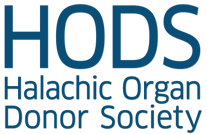The Nishmat Avraham discusses two major issues in the course of his commentary on the section of Shulchan Aruch dealing with when we may violate Shabbat to save a life. The first deals with whether one is permitted or required to endanger one’s own life to save another life. This is relevant to someone who wants to be a living kidney donor, since there is some risk to the donor in the process.The second issue is related to the definition of death. The Shulchan Aruch rules that if you see someone is not breathing, you can no longer violate Shabbat to save their life. Many have taken this as an indication that halacha defines life and death by the presence or lack of breathing. The Nishmat Avraham quotes a personal conversation with Rabbi Shlomo Zalman Auerbach that this halacha is not actually relevant to the definition of death. In those days, if someone was not breathing, they had no way to save their life, or even extend their life for a little bit, so one would not be allowed to violate Shabbat to save them. Nowadays, when we have the capability to resuscitate a person who has stopped breathing, certainly the halacha would permit violating the Shabbat to save them.
Author Archives: admin
Halachic Questions: Heart Transplants
Prohibition of Tattooing, The
Two articles from the Nishmat Avraham are included here. The first is a short piece on the halachot of tattooing and how that would relate to doctors writing information on their hands. The second article is a lengthy commentary on the section of Shulchan Aruch dealing with Goseis (one whose death is immanent). In it, he includes an extensive discussion on the issue of brain-death. He expresses a great deal of skepticism as to whether brain-death should be considered a sufficient criterion to establish halachic death in a patient whose heart is still beating. He also expresses skepticism in the ability of the current medical criterion to positively diagnose brain-death, and even if it could, he expresses a lack of trust in physicians to always carry out the required tests.He continues by summarizing the opinions of major poskim on the issue of brain-death. He mentions Rabbi Tendler and the Chief Rabbinate’s ruling that one may transplant organs on the basis of the brain-death criteria, and Rabbis Eliashiv and Waldenberg who rejected it. He discusses at length the opinion of Rabbi Shlomo Zalman Auerbach, disputing reports that he had changed his opinion and eventually come to accept brain-death. With regard to the position of Rabbi Moshe Feinstein, while his earlier responsa are against organ transplants, his later responsa do seem to endorse the use of brain-death criteria. However, the Nishmat Avraham notes that some of these responsa seem to be based on outdated medical knowledge, and suggests that in light of some recent findings, Rabbi Feinstein may have changed his mind and opposed the use of brain-death. Ultimately, the Nishmat Avraham concludes that the consensus of most major poskim is not to rely on brain-death criteria halachically for organ transplants.
Organ Transplantation
Click here to see the summary of this article.
Source Material (Biblical & Rabbinic)
Addendum to: As Good As Dead: Is There Really Such a Thing as Brain Death
This article reviews a longer article that deals with the questions of whether brain-death is actually a natural, biological state, or whether it is merely a legal fiction created for the purpose of legally allowing organ transplants. He summarizes two arguments that have been made to support it being a natural biological state and identifies the weaknesses in each. Ultimately, the author suggests that we should think of organ transplantation as a conscious choice by the patient or their family to terminate their life to save another, rather than insisting on waiting until after brain death, which the author seems to view as a somewhat arbitrary criterion.
Cadavaric Organ Transplantation
Organ Transplants
Jewish Perspectives on Death and Dying
Moment of Death
The Hebrew was translated into English by Dr. Fred Rosner
